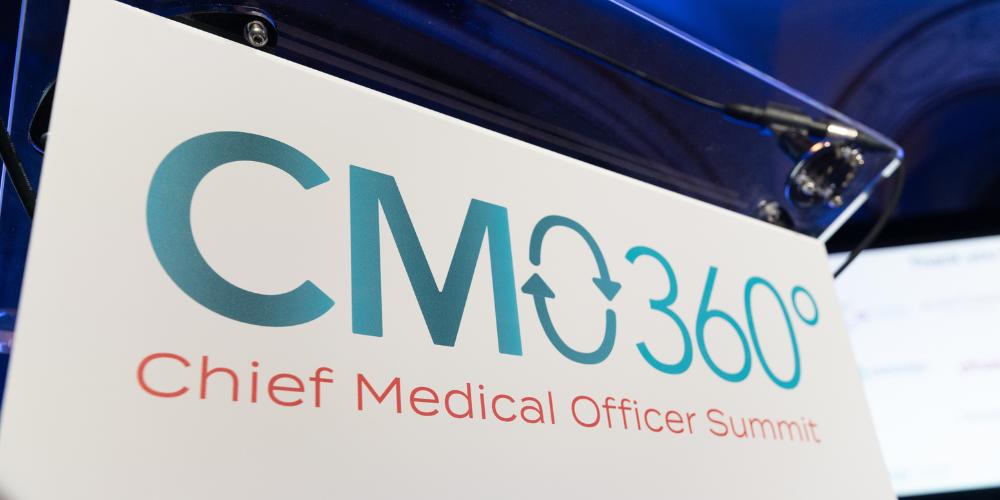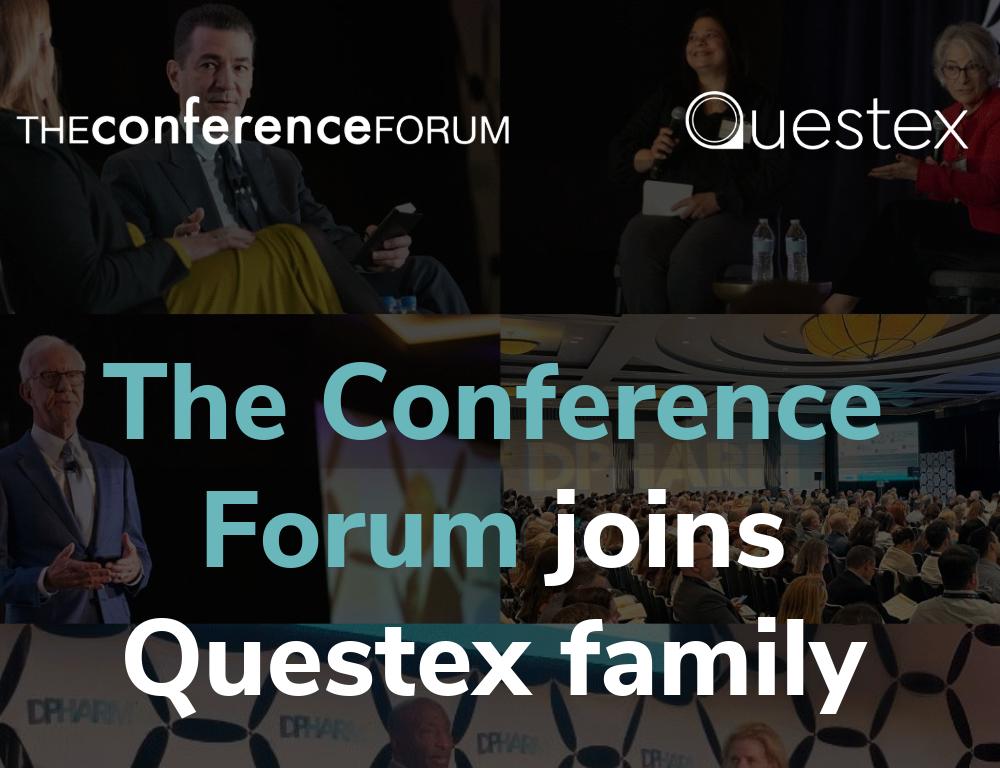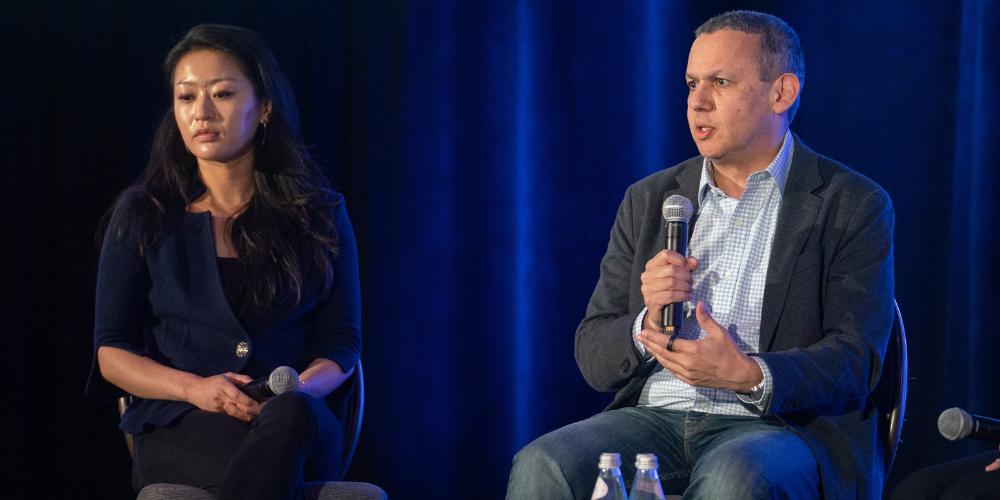
What kind of economic and financial trends did we see in 2023?
2023 was a continuation and elongation of the cycle that began in 2021. Essentially, a growing number of companies were trading below cash, the XBI continued its decline throughout the year, and there was an increased difficulty raising private and public capital.
As 2023 progressed, the Fed raised its rates for what looks to be the last time. In the last two months of the year, the Fed signaled that they were nearing the end of the rate hike cycle and announced the possibility of cutting rates up to three times in 2024. This was an almost “all-clear” signal that biotech investors needed, given that this is the riskiest industry, and interest rates had a materially negative impact.
There was a “melt up” where the XBI went from $65 to about $85 in a matter of four or five weeks. We saw strength in the market, which primarily impacted the stronger companies while weaker companies are still struggling. There are now fewer companies trading below cash. The end of the year provided a flurry of M&A deals, a development that should bode well for 2024.
What kind of trajectory can we expect in 2024?
There are still a lot of desperate companies, which is why I don't think 2024 is going to be a painless year. There are still layoffs to come. There are still companies that are going to go under, merge or reverse merger. However, the number of companies in those situations should decline.
I believe that 2024 will mark an improvement over 2023. However, I don't anticipate the return of the good times just yet. I don’t think that the Federal Reserve will decrease rates as rapidly as some market observers suggest. Nevertheless, I do anticipate it will gradually get easier to go public. There are likely to be more IPOs in 2024 compared to 2023, and I expect that private financings will then follow and be a little bit easier to come by.
Preclinical companies have struggled to raise capital over the past 18 to 24 months. While this may ease somewhat, I believe investors will continue to focus on clinical-stage companies, with an eventual shift toward earlier-stage. The size of the rounds has continued to increase, particularly in biotech hubs like Boston. Thus, there is an interesting dynamic between stage of development, stage of company, status of company, whether it's private or public, where the company is located as far as how they do the type of innovation, etc. I do think we saw things bottom out in October 2023, but I don’t think we will have a rapid rise back to the top.
I do think we saw things bottom out in October 2023, but I don’t think we will have a rapid rise back to the top.
Are we seeing a similar shift for partnerships and M&A trends?
In 2023, a couple of pre-phase-two proof-of-concept (POC) companies were acquired, indicating that M&A is returning in a somewhat limited way to earlier stage companies. If this trend continues for companies that have not yet achieved POC in patients, that would be a very good sign for biotech providing an earlier exit option besides IPOs. Most of the M&A in 2023 and years prior have been for companies in phase-three or even post-approval stages. If we see more M&A, especially for pre-POC-stage companies, that will have a materially positive impact on a lot of areas.
On the licensing side, early-stage clinical licensing deals have been very challenging. There’s become a “valley of death” on the strategic side where you can get a very early deal done or a really late deal done but to get one done around an IND or phase one is much more difficult. And the deals being done are not as remunerative as deals in years prior because pharma companies know that these biotechs are more desperate and are having trouble raising capital.
The partnering landscape is impacting the fundraising landscape. Many companies have pivoted trying to partner their assets rather than raise capital. Because pharma knows this, they have made it more challenging to get those deals done. So, if you want to get an early clinical license done, you may need to explore further down your call list to identify additional potential partners to approach.
We often see investors following one another into specific “hot” areas. For earlier-stage companies who may not be in those areas, what can they do or what data would be compelling to attract investors?
In financing, you need to convince multiple people because of the diversification and the amount of capital required. Given this dynamic, you have to get multiple investors on board to fund these companies. Therefore, almost by definition, they must function as a team and operate cohesively.
Investors focus on “hot” areas because they see preliminary data that suggests it could work and would warrant more investment to see it through. It’s their job to take those types of risks. When something loses its “hot factor,” it's usually because data has emerged that causes it to be less attractive, and investors tend to spend less time in those spaces. Sometimes it's unwarranted, and usually that's where the best deals are, in underserved, underappreciated areas, where you can hunt through the pieces of coal to find a diamond. However, that's a lot harder to do.
It is a lot easier to find something that's hot and invest with your colleagues that also like it. Because again, you have to convince other people of your thesis, unless it's a truly capital efficient play.
Focusing on the right targets, indications and proper trial design is important because you can have a drug that works but without the right trial design or patient population, it could fail. And that's not for technical reasons. That's for human error management reasons.
What role does a CMO play in those interactions with investors?
A CMO typically focuses on clinical stage opportunities because they design and run clinical trials. Focusing on the right targets, indications and proper trial design is important because you can have a drug that works but without the right trial design or patient population, it could fail. And that's not for technical reasons. That's for human error management reasons. Getting that right is critical. Before a CMO runs a study, they need to make sure that all aspects make sense. CMOs are incredibly important as they are responsible for selling the opportunity and data to investors and to strategic partners.
How should CMOs think about selecting an indication or target, especially when it comes to communicating that to investors?
If a target is ubiquitous across multiple indications, there are many considerations: the competitive intensity of that space; the current and future treatment paradigm; where your product would slot in and how it is differentiated versus other competitors; the difficulty of recruitment and hitting the endpoint, and of course the likelihood of regulatory approval. Additionally, you need to think about the commercial potential and whether this is something you will try to self-commercialize or sell to a bigger company.
There are many strategic decisions that are wrapped into that. How much capital can you raise? What is the best and highest use of that capital? How much risk diversification do you want? Do you want to run one big study, or do you want to have two smaller studies and different indications that can give you multiple shots on goal? These are questions that the CMO, CEO and Board have to decide after a rigorous process.
Often, CMOs assume that they are presenting to someone who understands everything but often that presentation goes to a committee or a broader team who may not have the same level of experience
What can CMOs do to better present to investors?
Present data credibly with authority that is not overly promotional, but also not too flat. CMOs have to know how to sell and convince an investor or partner that what they’re developing is worthwhile. People don’t like to use the word “sales” but they are salespeople when they present something. You have to do it with credibility.
Taking data and putting it in the proper context is incredibly important. CMOs need to be able to actually explain why this data matters and draw comparisons to competing agents and standard of care. Often, CMOs assume that they are presenting to someone who understands everything but often that presentation goes to a committee or a broader team who may not have the same level of experience. You must make sure you’ve laid it out in slides for people who may not be in the room as you are presenting.
The more experience that CMO has, the more they can draw on the credibility of their past experiences. While that isn’t something that can be taught, it’s hard to replace experience. Without that experience, they should have a rock solid scientific or clinical advisory board (SAB) that has industry experience designing clinical trials. Many SABs comprise of academics who do not understand the practical implications of trial design, trial recruitment and commercial implications. The CMO needs to take their inputs and integrate that perspective to responsibly design what they think is the right approach.
What are some of the biggest mistakes that biotechs or CMOs specifically make when interacting with investors?
Over promising on data, over promising on timelines, and under budgeting. When you come back to someone and they see you haven’t hit your timelines, need more money, or if they dig into your data and it doesn’t add up, you lose credibility. If you say something in a slide and on diligence, they find that not to be the case, people will just pass since they’ll assume that other data also isn’t properly presented.
You need to make sure the data is not just accurate but is supportable. You need conservative yet achievable timelines. If you sandbag it too much, it will cost too much and take too much time, and no one will want to invest. But if you're too aggressive and you don't hit those timelines, you're not going to get investment either when people come back for future financing rounds.
Also, if you didn't think through all the implications around trial design, indication selection and commercial potential, you as the CMO are on the hook because you're the one responsible for the trial at the end of the day.
You need to make sure the data is not just accurate but is supportable. You need conservative yet achievable timelines.
Where can CMOs learn more about financing and investor interactions?
Locust Walk happens to teach a newco MBA in partnership with BIO, LabCentral, and MassBio. There are also executive education courses one could take at major MBA programs. I would have conversations with the CFO and CEO and ask to be mentored on the fundraising process. Many CMO become CEOs, and then fundraising skills are mandatory. You have to be able to raise capital and speak finance in investor conversations. When you're on the road, you will pick up valuable information. I would make sure you are in the room where it happens, and you will learn on the job.








